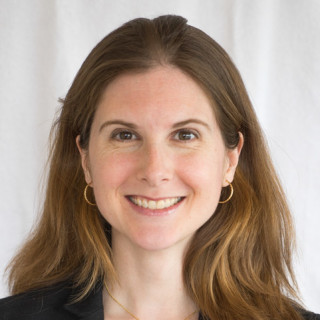I met Anna, a spirited 5-year-old girl who liked “PAW Patrol” and the color purple, when she came to the ER with an asthma exacerbation. After she received her first breathing treatment, I opened her chart to review her past outpatient visits. Anna received all of her care at the resident clinic where I saw patients myself. There were multiple notes to review; I was certain that I would get a sense of her baseline exam and the trajectory of her illness. But as I clicked through her electronic records, I noticed that she had been seen by a different resident at every appointment. She didn’t have a primary care provider to track her symptoms and assess her progress with her asthma regimen. In fact, I probably knew her as well as anyone else after just one ED visit.
Anna’s lung exam improved after several breathing treatments and I prepared the paperwork to send her home. But instead of recommending that she follow up with one of my co-residents, I printed off a list of attending names. I felt that we were doing this family a disservice by having them see a different resident at each outpatient visit. Anna needed to be paired with someone whom she could count on for regular follow up, and who could help manage her chronic illness, hopefully avoiding future ED visits.
Anna’s case highlights one of the problems associated with resident-run clinics: lack of continuity. Inpatient responsibilities and scheduling issues are among the factors that prevent residents from seeing the same patient more than once — let alone establishing longitudinal relationships. Clinic plays second fiddle to time on the wards; in most programs, residents must complete their inpatient responsibilities before heading to a half-day of clinic. The sign-out process is often messy and rushed, and once in clinic, residents are sometimes distracted by updates from the inpatient side. Some programs are structured to give residents a few weeks of dedicated outpatient time between patient blocks (the so-called “X+Y” system) but as a result, residents aren’t able to see patients who may need to return outside of a specific window.
The lack of continuity has multiple harmful consequences for everyone involved, including the patients and families who need continuity the most. First and foremost, rapport with patients suffers. Seeing the same person visit-to-visit builds trust and allows a meaningful patient-provider relationship to form. Without continuity, patients and their families may be less likely to disclose sensitive issues or work up the nerve to ask questions. Not having a primary care provider can also be a source of embarrassment. One mother I met in the hospital was ashamed when I asked her about her son’s pediatrician. “Well, I guess I don’t know,” she said. “We see someone new every time.”
Additionally, lack of continuity is inefficient: time is wasted pre-visit and during the appointment itself. Preparation for a visit requires sifting through old notes and determining the main items on the problem list, a process that is time-consuming if it’s your first encounter with the patient. During the visit, questions that have been asked previously will likely get repeated, causing frustration on the part of the patient. Those with multiple chronic conditions are at a greater disadvantage: there is more information to review and more at stake if something is missed.
Without continuity, information falls through the cracks. No one picks up on subtle changes over time. This could include new findings on physical exam — a wheeze or heart murmur, for example — but also differences in family dynamics or a patient’s mood or demeanor. In addition, providers have less motivation to take ownership and advocate for a patient they barely know. Patients are in a similar situation. If asked to try a particular diet or make a lifestyle change, there is less of an impetus to follow through if the next appointment is with another doctor. In fact, there is less of an impetus to show up in the first place.
To add insult to injury, those who would benefit most from continuity are the ones least likely to get it. Teaching hospitals and outpatient clinics staffed by residents represent a safety net for underserved populations, and residents see a disproportionate number of Medicaid and low-income patients. Those who can afford it go elsewhere and tend to see the same clinician every visit.
There are several possible ways to break the cycle. Residencies are predominantly inpatient-focused, a structure that is beneficial and financially advantageous for hospitals but does not necessarily benefit patients and trainees. Residents represent cheap labor. Quite simply, hospitals get more bang for their buck when residents staff the wards at the expense of continuity of care. To fix the issue, hospitals would need to hire more clinicians to assume resident responsibilities — a difficult task in the current funding climate.
If residents can’t see the same patients visit-to-visit, we should focus on ensuring that there is continuity on the level of the attendings who supervise resident clinics. It’s not enough for the same attending to merely sign off on the note; continuity only counts if the attending sees the patient and performs an exam, something that is not always required for billing (and therefore doesn’t happen on a regular basis). And if this can’t be guaranteed, residents should focus on same-day sick appointments rather than well visits. It’s unacceptable for patient care to suffer because the system is broken.
Has a lack of continuity in care negatively affected any of your patients? How have you taken steps to "break the cycle"? Share your experience in the comments!
Phoebe Prioleau, MD is a first-year child psychiatry fellow in the Post-Pediatric Portal Program at Children’s Hospital of Philadelphia. Prior to fellowship, she completed pediatrics residency at UH Rainbow Babies and Children’s Hospital in Cleveland, OH. She studied French literature and art history before medical school and has published creative work on Doximity's Op-Med platform, The Living Hand, Annals of Internal Medicine, and The Journal of Medical Humanities, among other places. She has no conflicts of interest to disclose. Phoebe was a Doximity 2019–2020 Fellow and is a 2020–2021 Doximity Op-Med Fellow.
All names and identifying information have been modified to protect patient privacy.
Illustration by Jennifer Bogartz







